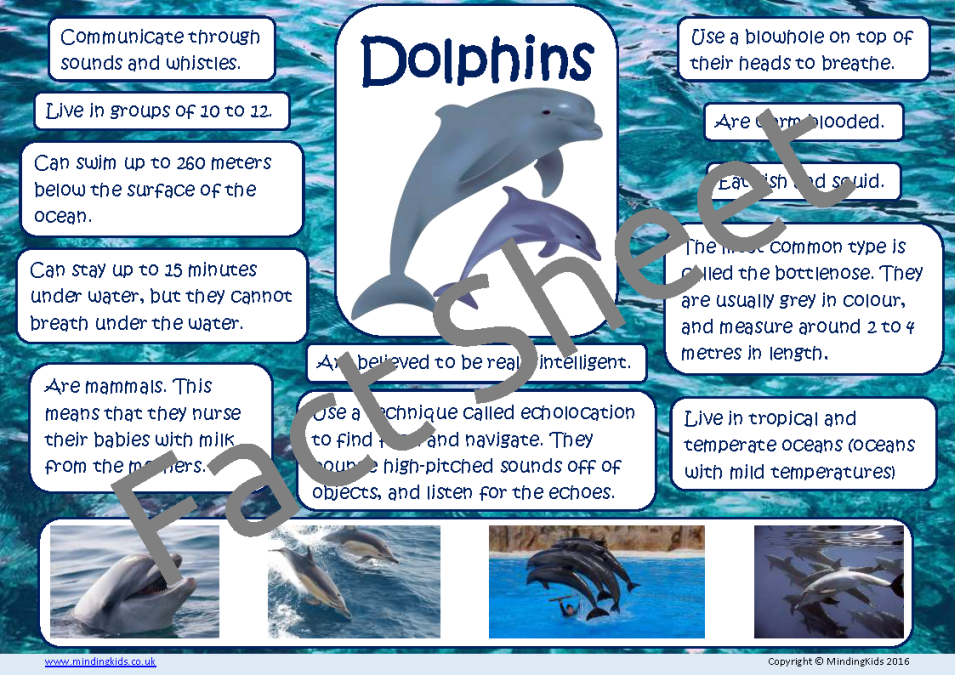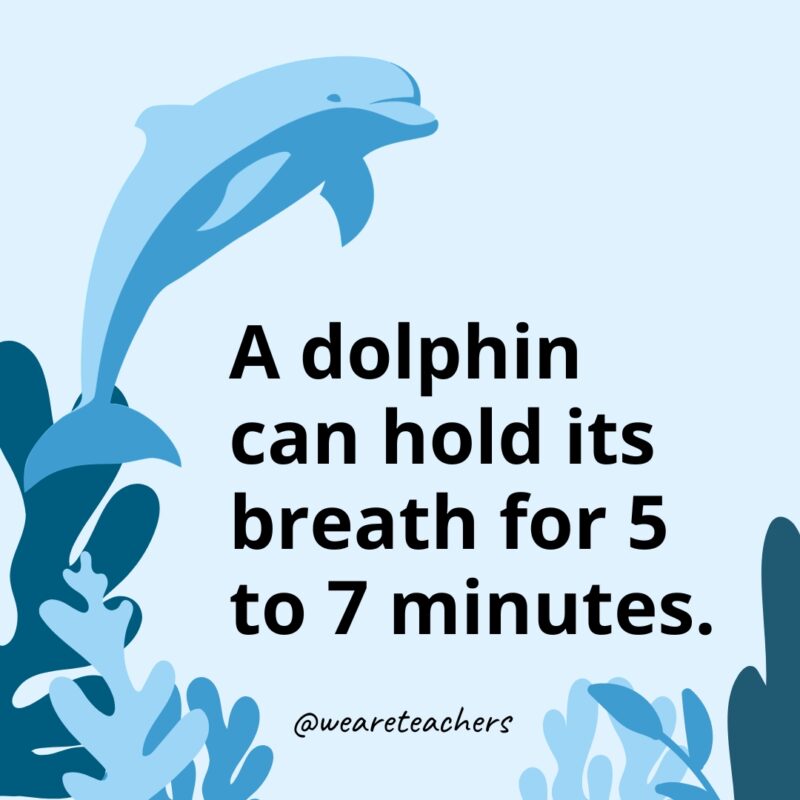Exactly How Dolphin Facts Showcase Their Significance to Marine Biodiversity
Wiki Article
Study the Sea: Exciting Dolphin Facts for Sea Lovers
The globe of dolphins presents a fascinating junction of knowledge, social habits, and environmental significance. From their intricate communication techniques to their excellent problem-solving capacities, dolphins challenge our understanding of pet knowledge.Dolphin Species Variety
Diversity is a characteristic of the dolphin family members, incorporating a wide array of varieties that exhibit unique physical characteristics, actions, and habitats. The family members Delphinidae, typically called oceanic dolphins, comprises approximately 37 species, each adapted to certain environmental niches. The bottlenose dolphin (Tursiops truncatus) is renowned for its intelligence and adaptability, growing in both open and coastal sea environments.On the other hand, the orca (Orcinus whale), often described as the awesome whale, is the largest participant of the dolphin family members and is characterized by its striking black-and-white coloration. Orcas demonstrate complex social structures and searching methods, showcasing the behavior diversity within the family. Various other species, such as the spinner dolphin (Stenella longirostris), are kept in mind for their acrobatic screens and preference for warmer waters, highlighting the adaptability of dolphins to various aquatic environments.
In addition, river dolphins, including the pink river dolphin (Inia geoffrensis), inhabit freshwater environments, additionally showing the extensive habitats that dolphins inhabit. Dolphin Facts. This unbelievable diversity not only improves aquatic ecosystems but likewise highlights the relevance of conservation efforts to secure these amazing animals and their settings
Social Actions and Interaction
The complex social actions and interaction methods of dolphins are crucial parts of their existence, facilitating team communication and boosting survival. These highly intelligent aquatic animals display complicated social frameworks, frequently forming sheathings that can range from a couple of people to over a hundred. Within these groups, dolphins take part in behaviors such as participating hunting, social play, and shared defense, which promote solid bonds among participants.Dolphins utilize a sophisticated array of vocalizations, consisting of clicks, whistles, and body movement, to communicate details and share emotions. Their signature whistles offer as unique identifiers, akin to names, making it possible for people to call out to one another. This vocal communication is complemented by non-verbal signals, such as jumping, slapping the water, and integrated swimming, which better improves their communications.

Unique Feeding Habits
One-of-a-kind feeding practices characterize dolphins, showcasing their adaptability and knowledge in various marine environments. These aquatic creatures are understood for their varied diets, which primarily consist of fish, squid, and shellfishes. Their searching strategies can differ significantly, usually tailored to the specific victim and environmental problems.One significant method is cooperative searching, where dolphins work in groups to herd institutions of fish right into tight formations, making it easier for people to catch their meal. This social actions not just boosts their feeding efficiency yet additionally reinforces social bonds within the skin. Additionally, dolphins have actually been observed utilizing a strategy called "fish-whacking," where they utilize their tails to stun or confuse fish, assisting in much easier capture.
One more interesting feeding routine is echolocation, which permits dolphins to spot victim even in murky waters. By discharging sound waves and interpreting the returning echoes, they can recognize the dimension, form, and place of their targets. This amazing capability highlights their versatility in different environments, from shallow coastal locations to deeper oceanic waters. On the whole, the one-of-a-kind feeding behaviors of dolphins highlight their role as proficient predators within the marine ecological community, showing both intelligence and resourcefulness.
Intelligence and Trouble Solving
Their intelligence is evident in their analytic abilities, social communications, and capacity for learning. Research has shown that dolphins can utilize devices, such as utilizing marine sponges to secure their rostrums while foraging on the seafloor.In addition, dolphins exhibit innovative communication skills, employing a complex system of clicks, whistles, and body movement. Dolphin Facts. This communication is essential for coordinating team tasks, such as searching and socializing, highlighting their ability to function jointly in the direction of a common goal. Their capability to understand abstract concepts, including self-recognition in mirrors, further highlights their cognitive refinement
In regulated studies, dolphins have revealed an ability to fix problems and execute tasks that require both memory and crucial thinking. These communications suggest not just intelligence yet likewise a determination to involve with their atmosphere in unique means. Generally, the cognitive expertise of dolphins puts them among one of the most smart varieties on the earth, cultivating a deeper appreciation for their role in aquatic ecosystems.
Preservation and Environmental Influence
Conservation efforts focused on protecting aquatic communities are vital for protecting dolphin populations and their habitats. Dolphins read more are extremely delicate to environmental adjustments, and their survival is delicately linked to the wellness of oceanic ecological communities. Overfishing, pollution, and environment adjustment present substantial threats to both dolphins and their settings.Overfishing interrupts the food web, resulting in a decline in prey varieties essential for dolphin survival. Moreover, contaminants such as chemicals and plastics build up in marine settings, threatening dolphins with ingestion and bioaccumulation. Enhanced water temperatures and ocean acidification, consequences of climate adjustment, additionally threaten the fragile balance of marine communities, impacting dolphin breeding and migratory patterns.
Conservation campaigns, consisting of the establishment of marine secured locations (MPAs), play an essential duty in safeguarding these intelligent creatures. MPAs aid minimize human effect, permitting environments to thrive and recover. Public recognition projects and community engagement are likewise essential, fostering a culture of stewardship in the direction of aquatic life. By focusing on conservation efforts, we can make certain that future generations enjoy the charm and vitality of dolphins and the oceans they populate. Shielding aquatic ecological communities is not practically conserving dolphins; it has you could check here to do with preserving the elaborate web of life that sustains us all.
Final Thought
Dolphins exemplify the complexity and richness of marine life through their diverse types, complex social frameworks, and progressed cognitive capacities. As essential parts of aquatic environments, Recommended Reading dolphins emphasize the need of recurring preservation initiatives to guard their environments.Various other varieties, such as the rewriter dolphin (Stenella longirostris), are kept in mind for their acrobatic display screens and preference for warmer waters, highlighting the adaptability of dolphins to various marine communities.
In general, the special feeding habits of dolphins highlight their role as competent killers within the marine community, showing both intelligence and ingenuity.
Overall, the cognitive prowess of dolphins positions them amongst the most smart species on the earth, promoting a much deeper admiration for their function in aquatic ecological communities.

Report this wiki page